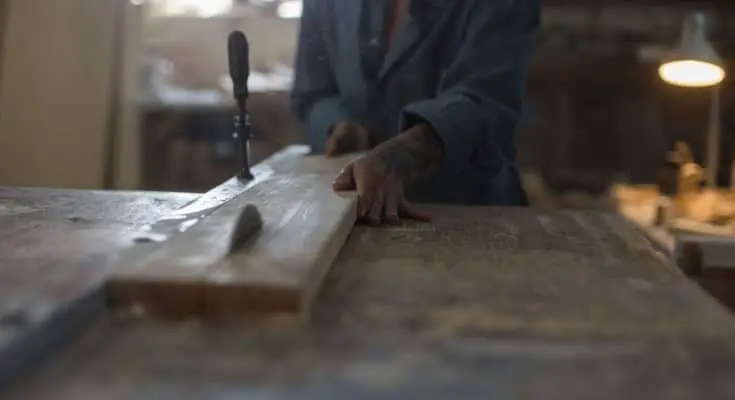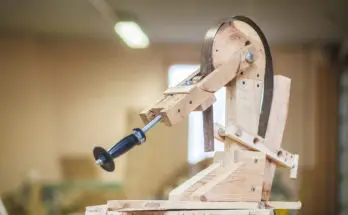The question has been raised in recent years within the woodworking community whether or not the hobby so many enjoy is beginning to die and lose its popularity. Like most things, the answer to the question can be debated both ways. However, there are several indications that point to the fact that woodworking is actually growing rather than dying.
If you look around at the woodworking industry, there has certainly been a change when looking at what things are like today versus 50 years ago. Even in the past 15-20 years, there has been a major shift in how people can enter the hobby and sell their product. There’s also been a major shift in what people are willing to pay for. The best example of this is what you get when buying a new home.
Years ago, it wasn’t uncommon for new homeowners to buy a home with very detailed trim and molding work. Some homes even had very intrigue designs built into their hardwood floors. Today, homes are generally built as quickly as possible and extra details are far less common unless the buy specifically asks for them and more importantly pay a premium for these services.
These examples can certainly cause the question to be asked “Is Woodworking a Dying Art?” As you’ll see below though, woodworking is not a dying art. In fact, it’s quite popular and growing more than ever. There is a shift in what the consumer is looking for and willing to pay, but the art itself is not going away anytime soon.
Change of Landscape
Today, a consumer has the ability to buy practically anything online. The result of the unlimited access of goods, is a shift in what buyers are willing to pay for. Due to the unlimited access of purchasing options, it also creates a whirlwind of change regarding how people decorate their homes.
A couple decades ago, people were willing to buy high quality furniture for their home with the mindset this furniture would last for many years to come. Today, home decorating styles change nearly as quickly as fashion trends.
In addition, consumers have become more driven more by price than quality in recent years. Many times, young couples will buy a piece of furniture with the assumption it will be replaced once the kids are past the toddler age (if it survives). Whereas, just a few years ago, it wasn’t unheard of for a dinner table to be used and passed down for several generations.
#1 – Online Impact
 of woodworking project you can imagine. Even better, many of these plans are even free.
of woodworking project you can imagine. Even better, many of these plans are even free.I recently wrote an article titled “What are the best Resources for Woodworking” that you can check out here.
#2 – Local Impact
#3 – Customer Base
If you are interesting in becoming a full time woodworker, you should check out my article here on how to do so.
#4 – Ease to Start
It is now easier than ever to get started in woodworking. More people are getting involved in woodworking than ever before.
Gone are the days where people became interested in woodworking because they watched their grandfather working in his shop. Instead, people want to learn woodworking as a hobby to escape their day to day stresses and bring their ideas to life.
There are endless videos available on YouTube that will teach you how to make pieces and well how to use various tools and machines. Having someone around to show you how to work a saw isn’t as necessary as it has been in the past.
#5 – Reclaimed Wood
In recent years, the use of reclaimed barn wood has exploded. It’s impossible to go to a craft show and not see booth after booth selling some sort of creation made out of barnwood.
 I believe the reclaimed wood crazed has helped introduce people to woodworking. Reclaimed barnwood has a distinct, weathered look that is impossible to completely replace. Given the popularity of re-purposing old things into something new, is no wonder reclaimed wood has become popular.
I believe the reclaimed wood crazed has helped introduce people to woodworking. Reclaimed barnwood has a distinct, weathered look that is impossible to completely replace. Given the popularity of re-purposing old things into something new, is no wonder reclaimed wood has become popular.
Many people who has started woodworking because of reclaimed did so with creating simple signs in the beginning. Soon, they realize a table saw is needed into order to make more custom pieces. As their experience level increases they begin to take on more and more difficult projects. In no time, they’ve become quite skillful at a hobby they knew nothing about just a short time ago.
Conclusion
It’s easy to assume that woodworking is becoming a dying art if you try to compare the the hobby as it is today to the way it was a few years ago. Things have certainly changed since that time period.
However, rather than the art dying, it’s really just evolved. Today, only a small percentage people are willing to pay for a piece that takes a master craftsman days to create. On the other hand, consumers are willing to pay sometimes outrageous prices for reclaimed wood signs or other smaller pieces that they find at a local craft show.
For an older woodworker like myself, these changes are hard to watch. I get much more satisfaction from building a nice piece of furniture that I know will last a lifetime than making a batch of easily to reproduce signs out of barnwood.
Ultimately, I have to remind myself that if the profit margins for the barnwood signs is similar to the dining room table, I have to make the signs if that’s what is more likely to sell. That’s not to say no one is willing to buy a nice table, but the customers’ wants and desires have shifted, so I have to do the same. This happens in every business or hobby that has been around for a while.




